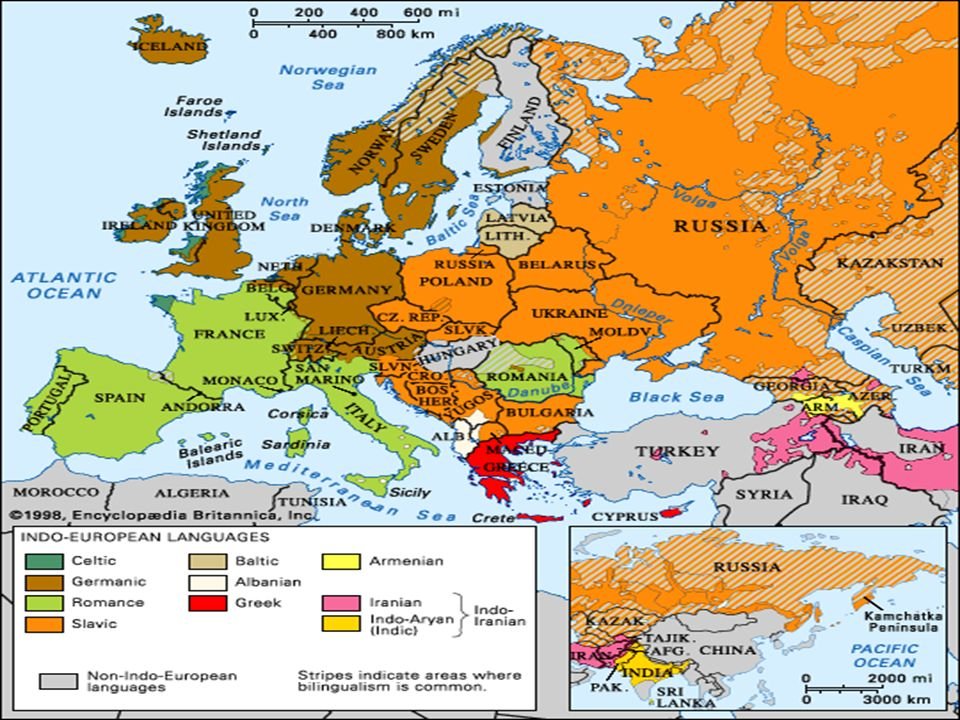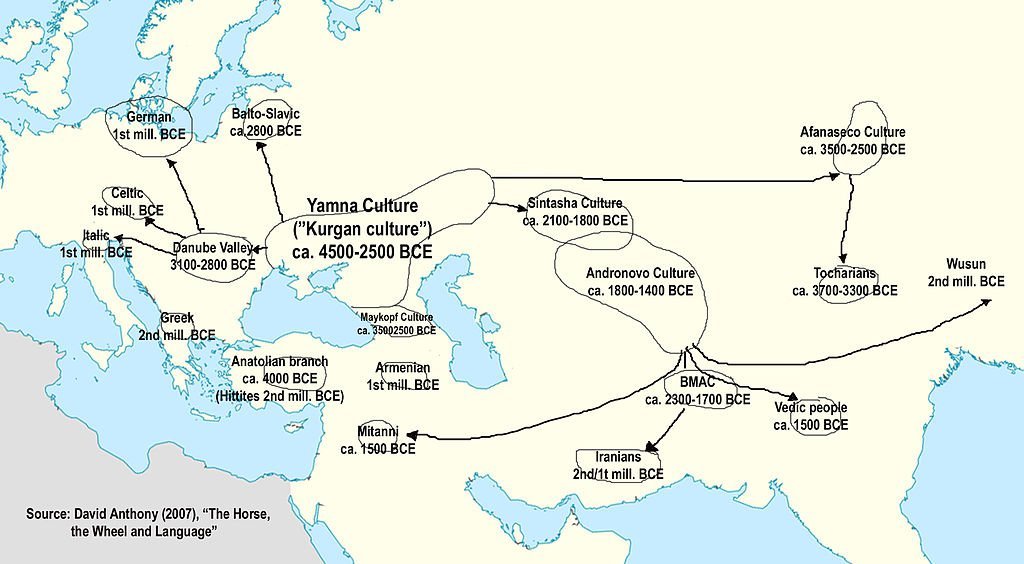Mystery Of Ancient Language PIE From Which Half Of All Languages Originate
Ellen Lloyd - AncientPages.com - Did you know that about three billion people speak languages that all originate from one root language that was spoken about 6,000 years ago?
Ancient language PIE is not a universal language, but it is the common ancestor of the Indo-European languages, the world's most widely spoken language family. As many as 400 languages and dialects originate from it.
Hindi, Bengali, Persian, English, German, Spanish, and Greek all come from the same root, known as Proto-Indo-European (PIE).
Proto-Indo-European, or PIE, was discovered in 1868 by German linguist August Schleicher.
When And Where Was PIE First Spoken?
It remains unknown when, where, and by whom PIE was spoken, and scholars disagree on how the language spread.
However, many theories attempt to unravel the mystery of this fascinating ancient language.
Currently, the Kurgan hypothesis is the most accepted theory according to which language PIE formed in a region known as the Pontic-Caspian Steppe, a sprawling grassland north of the Black and Caspian Seas today encompasses parts of Russia, Ukraine, and Kazakhstan. The earliest Kurgans date to the 4th millennium BC in the Caucasus and are associated with the Indo-Europeans.
Language PIE is believed to have been spoken in the region from about 4500 to 2500 B.C. Linguist Will Chang from UC Berkeley conducted a comprehensive study of the Proto-Indo-European language and discovered that the first linguistic divergence occurred about 6,500 years ago. By cross-referencing these findings with an analysis of the Indo-European language tree, Chang and colleagues concluded that conquering Indo-Europeans spread PIE as they moved westward.
The Kurgan hypothesis has also been confirmed by David Reich of Harvard University. Reich examined 69 ancient Eurasian mummies who lived 8,000 to 3,000 years ago. One of the mummies was the famous Iceman Ötzi discovered in a 5,000-year-old glacier in the Ötzal Alps in South Tyrol. Genetic tests revealed that certain ailments, including hay fever, derive from Neanderthal genes.
Based on these results, scientists could conclude that European hunter-gatherers came from the Yamnaya steppe in Russia, appearing around 6,000 to 5,000 years ago. These herders originated in the Near East.
Later, about 4,500 years ago, the Corded Ware people created settlements in the Northern part of Europe, including Germany. According to the genetic study conducted by Reich, the Yamnaya Steppe people swept through from the East, settling in Europe and eventually becoming the Corded Ware people. Genetic evidence suggests that most Europeans can trace their ancestry to the Corded Ware people.
Another theory also attempts to explain the origin of the PIE language. According to the Anatolian hypothesis that was first developed by British archaeologist Colin Renfrew in 1987 and later supported by evolutionary biologists from the University of Auckland, New Zealand, speakers of the Proto-Indo-European language (PIE) lived in Anatolia during the Neolithic era, beginning about 10,200 BC, and ending between 4500 and 2000 BC.
The Kurgan and Anatolian hypotheses contradict each other, but scientists seriously consider both since they offer compelling evidence.
Scientists also consider the possibility there is one common universal language that ties all other languages together.
The idea of a universal human language goes back at least to the Bible, in which humanity spoke a common tongue but was punished with mutual unintelligibility after trying to build the Tower of Babel all the way to heaven.
Some researchers think they have found a universal language that self-organizes so that related concepts stay as close together as possible within a sentence, making it easier to piece together the overall meaning.
Updated on August 3, 2024
Written by Ellen Lloyd – AncientPages.com
Copyright © AncientPages.com All rights reserved. This material may not be published, broadcast, rewritten or redistributed in whole or part without the express written permission of AncientPages.com
Expand for referencesMore From Ancient Pages
-
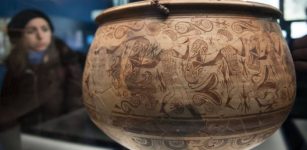 Ancient Secrets Of Iberian Warrior Vase – 2,000-Year-Old Masterpiece Of Art
Archaeology | Dec 5, 2017
Ancient Secrets Of Iberian Warrior Vase – 2,000-Year-Old Masterpiece Of Art
Archaeology | Dec 5, 2017 -
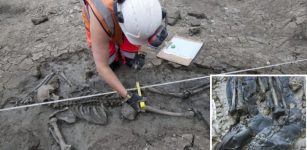 Medieval Mystery Of The Booted Man Found In The Thames Mud
Archaeology | Dec 10, 2018
Medieval Mystery Of The Booted Man Found In The Thames Mud
Archaeology | Dec 10, 2018 -
 Ancient European Languages Shed Light On A Great Migration And Weather Vocabulary
Archaeology | Aug 14, 2023
Ancient European Languages Shed Light On A Great Migration And Weather Vocabulary
Archaeology | Aug 14, 2023 -
 Oldest-Known Grinding Tool Used 350,000 Years Ago Was Found In Tabun Cave, Israel
Archaeology | Jan 4, 2021
Oldest-Known Grinding Tool Used 350,000 Years Ago Was Found In Tabun Cave, Israel
Archaeology | Jan 4, 2021 -
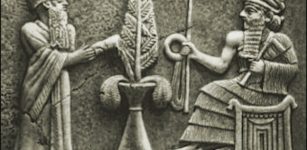 Ur-Nammu – Popular And Accomplished Ruler Of Sumer
Civilizations | Oct 31, 2016
Ur-Nammu – Popular And Accomplished Ruler Of Sumer
Civilizations | Oct 31, 2016 -
 Mysterious Ancient Shapeshifters Who Guided Humans And The Battle Of The Gods Described In Sacred Texts And Myths
Featured Stories | Oct 27, 2021
Mysterious Ancient Shapeshifters Who Guided Humans And The Battle Of The Gods Described In Sacred Texts And Myths
Featured Stories | Oct 27, 2021 -
 Ancient Trade Routes Between Iran And Mesopotamia – Uncovered
Archaeology | Dec 4, 2015
Ancient Trade Routes Between Iran And Mesopotamia – Uncovered
Archaeology | Dec 4, 2015 -
 Evidence Of Early Human Habitats Linked To Past Climate Shifts Discovered By Scientists
Archaeology | Apr 13, 2022
Evidence Of Early Human Habitats Linked To Past Climate Shifts Discovered By Scientists
Archaeology | Apr 13, 2022 -
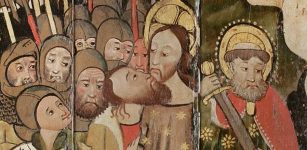 Rare Medieval Painting Depicting Judas’ Betrayal Of Christ Saved By Reformation ‘Recycling’
Archaeology | Nov 27, 2015
Rare Medieval Painting Depicting Judas’ Betrayal Of Christ Saved By Reformation ‘Recycling’
Archaeology | Nov 27, 2015 -
 On This Day In History: Canute Lavard Was Murdered By His Cousin, Magnus I Of Sweden – On Jan 7, 1131
Historical Figures | Jan 7, 2017
On This Day In History: Canute Lavard Was Murdered By His Cousin, Magnus I Of Sweden – On Jan 7, 1131
Historical Figures | Jan 7, 2017 -
 Third-Century Sculpture Of Roman Emperor Aurelian Unearthed In Bulgaria
Archaeology | Sep 5, 2018
Third-Century Sculpture Of Roman Emperor Aurelian Unearthed In Bulgaria
Archaeology | Sep 5, 2018 -
 What Was The Symbolism Behind Native American Feathers?
Ancient History Facts | Apr 21, 2017
What Was The Symbolism Behind Native American Feathers?
Ancient History Facts | Apr 21, 2017 -
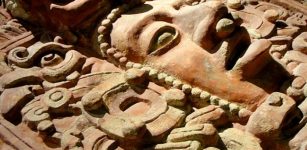 Maya Settlement In City Of Itzan Is Much Older Than Previously Thought – New Study
Archaeology | Jul 12, 2021
Maya Settlement In City Of Itzan Is Much Older Than Previously Thought – New Study
Archaeology | Jul 12, 2021 -
 Unique Statue Of Mayan God K’awiil Associated With Lightning, Serpents, Fertility, Maize, Royal Lineage Found On Maya Train Route
Archaeology | May 17, 2023
Unique Statue Of Mayan God K’awiil Associated With Lightning, Serpents, Fertility, Maize, Royal Lineage Found On Maya Train Route
Archaeology | May 17, 2023 -
 Kali – Hindu Goddess Of Death, Fear And Horror Who Destroys Ignorance, Evil And Establishes World Order
Featured Stories | Sep 28, 2021
Kali – Hindu Goddess Of Death, Fear And Horror Who Destroys Ignorance, Evil And Establishes World Order
Featured Stories | Sep 28, 2021 -
 Something Never-Before-Seen Is Hidden Beneath 15 Giant Viking Burial Mounds Spotted By Radar In Norway
Archaeology | Jan 19, 2021
Something Never-Before-Seen Is Hidden Beneath 15 Giant Viking Burial Mounds Spotted By Radar In Norway
Archaeology | Jan 19, 2021 -
 Silent Witnesses: Further Dark Secrets Of Batavia Shipwreck – Uncovered
Archaeology | May 11, 2023
Silent Witnesses: Further Dark Secrets Of Batavia Shipwreck – Uncovered
Archaeology | May 11, 2023 -
 Gigantic Neolithic Newgrange Monument: A Temple, Astronomical Observatory Or Ancient Tomb?
Civilizations | Aug 14, 2016
Gigantic Neolithic Newgrange Monument: A Temple, Astronomical Observatory Or Ancient Tomb?
Civilizations | Aug 14, 2016 -
 Evolution Might Stop Humans From Solving Climate Change – Researchers Say
Evolution | Jan 3, 2024
Evolution Might Stop Humans From Solving Climate Change – Researchers Say
Evolution | Jan 3, 2024 -
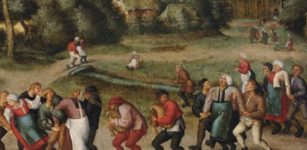 Unexplained Phenomenon Of The Dancing Mania That Occurred During The Middle Ages
Featured Stories | Aug 1, 2014
Unexplained Phenomenon Of The Dancing Mania That Occurred During The Middle Ages
Featured Stories | Aug 1, 2014

